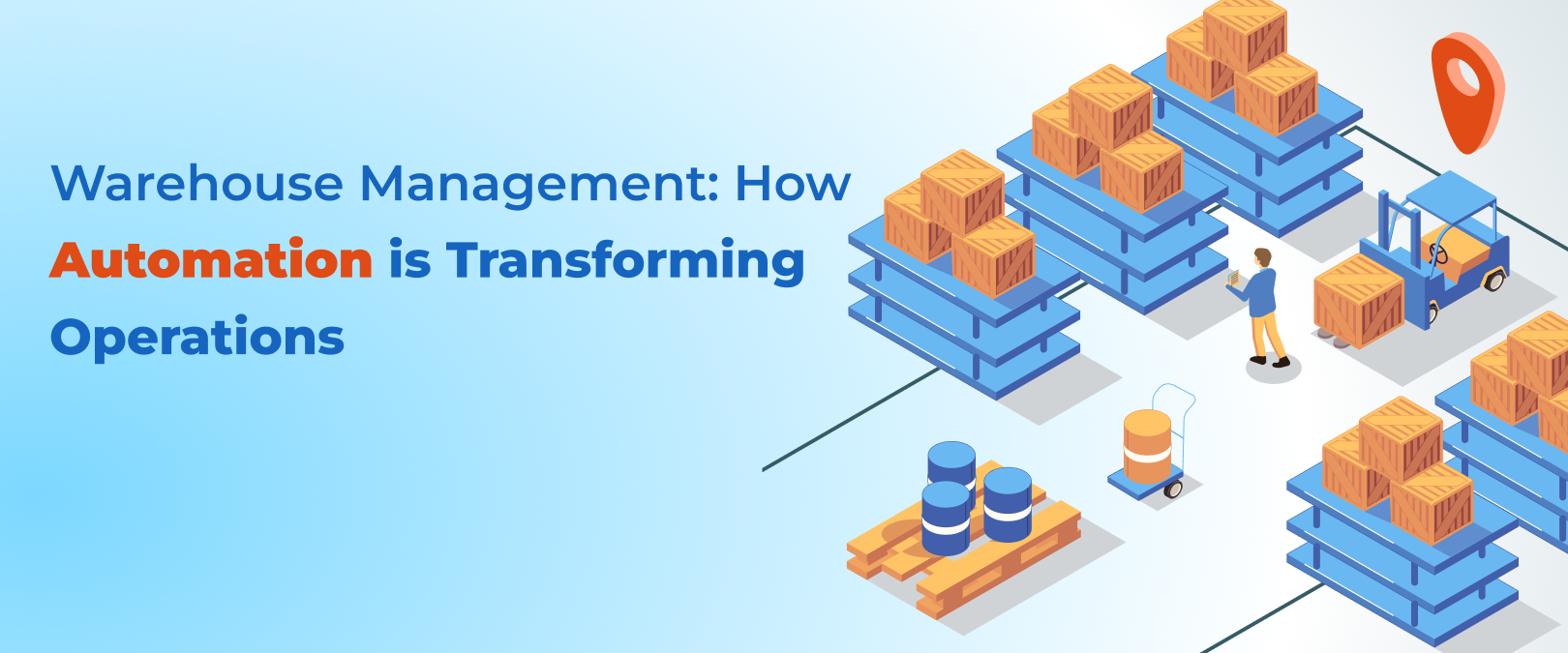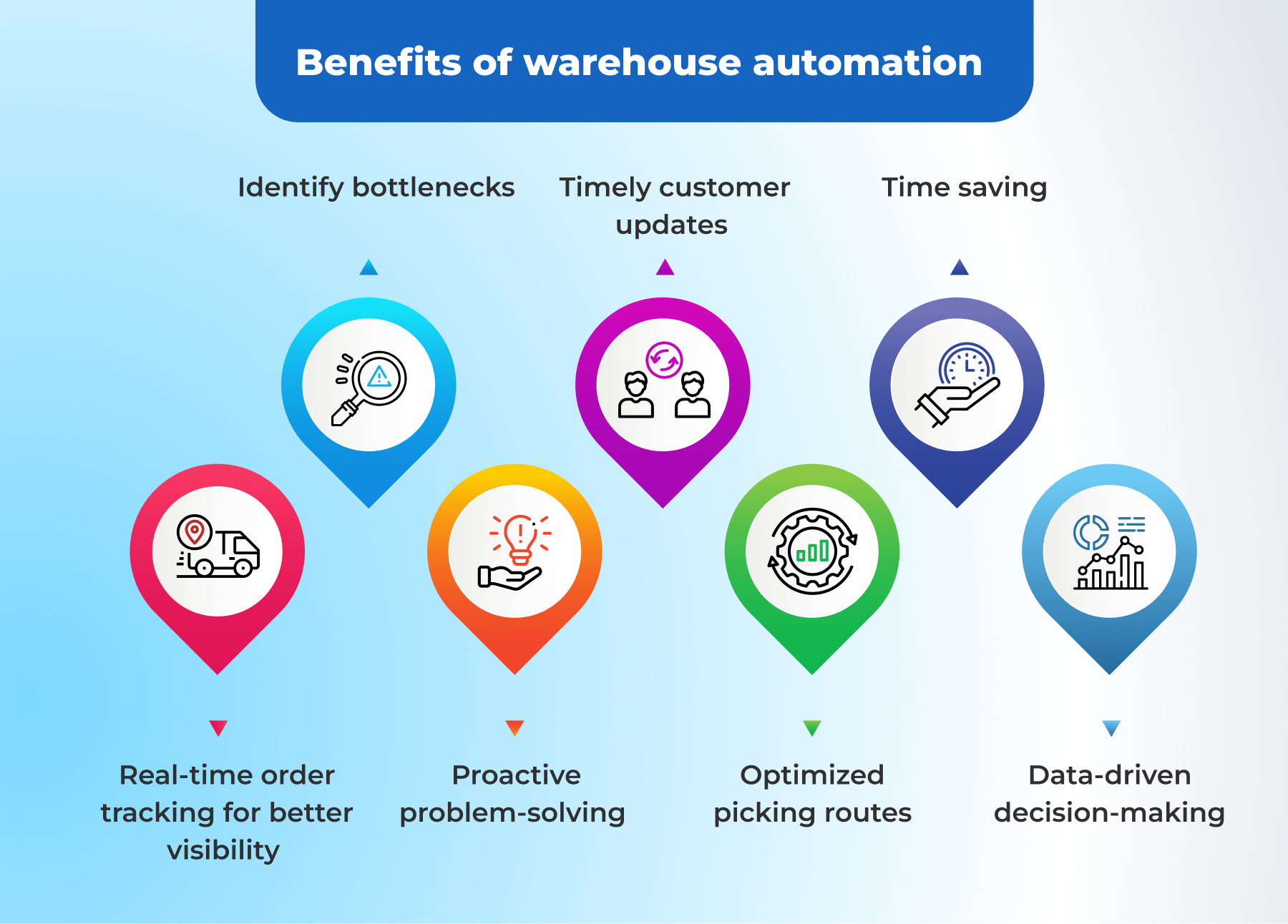
Why Your Warehouse Needs a Workflow Automated Software for Logistics Management?

Managing a warehouse can be tough, especially if you’re stuck doing everything by hand. But now, there’s a smart solution called warehouse automation that can make your job much simpler. With automation, you can keep better track of your stuff, spend less money, and keep your customers happy.
When businesses choose your warehouse to store their goods and ship them out, it’s really important to keep an eye on what’s in stock. With warehouse automation, you can automate the entire process right from watching over inventory from the moment it arrives to when it goes out the door.
The advent of automated workflow software, warehouses can streamline their logistics processes and achieve higher levels of efficiency and accuracy. In this blog, we’ll explore the compelling reasons why your warehouse needs automated workflow software for effective logistics management.
In this blog, we’ll discuss how automation improves inventory management in warehouses, and how you can make the most of it.

1. Enhanced Efficiency
Manual inventory management processes are notorious for being time-consuming and prone to errors. With workflow automation software, repetitive tasks such as data entry, inventory tracking, and order processing can be streamlined, saving valuable time and resources. By automating these tasks, warehouses can operate more efficiently, allowing staff to focus on higher-value activities that drive business growth.
Example
XYZ Distribution Center handles a large volume of products daily, but their manual inventory management system is slowing down operations.
Solution
They implement automated workflow software that automates order processing, inventory tracking, and replenishment tasks.
Outcome
With the new software, XYZ Distribution Center experiences a 30% increase in productivity, as staff no longer need to manually input data or search for products. Orders are processed and fulfilled much faster, improving overall efficiency.
2. Improved Accuracy
Manual inventory management is susceptible to human error, leading to discrepancies in stock levels, misplaced items, and fulfillment errors. Automated workflow software ensures greater accuracy by eliminating human intervention in routine tasks. Barcode scanning, RFID technology, and automated data capture minimize errors, leading to more precise inventory records and fewer mistakes in order fulfillment.
Example
ABC Electronics Warehouse struggles with inventory discrepancies due to manual data entry errors and misplaced items.
Solution
They adopt automated workflow software equipped with barcode scanning and RFID technology for inventory management.
Outcome
The accuracy of inventory records at ABC Electronics Warehouse improves significantly, with error rates dropping by 50%. This leads to fewer fulfillment errors, happier customers, and reduced costs associated with returns and exchanges.
Get a free Consultation WhatsApp | Skype
3. Real-Time Visibility
One of the biggest challenges in warehouse management is maintaining real-time visibility into inventory levels and movements. Automated workflow software provides instant access to up-to-date inventory data, allowing warehouse managers to make informed decisions quickly. With real-time visibility, warehouses can prevent stockouts, optimize storage space, and improve order fulfillment efficiency.
Example
Acme Logistics Fulfillment Center lacks real-time visibility into inventory levels, leading to stockouts and overstocking issues.
Solution
They deploy automated workflow software with real-time reporting capabilities that provide instant visibility into inventory levels and movements.
Outcome
With real-time visibility, Acme Logistics Fulfillment Center can optimize inventory levels, reduce carrying costs, and minimize stockouts. Orders are processed more efficiently, leading to improved customer satisfaction and increased revenue.
4. Cost Savings
Manual inventory management processes are not only labor-intensive but also costly in terms of time and resources. By automating workflows, warehouses can significantly reduce labor costs associated with manual data entry, inventory counting, and order processing. Additionally, automation minimizes the risk of errors and inefficiencies, leading to cost savings in the long run.
Example
Fresh Foods Warehouse spends a significant amount of money on manual labor for inventory counting and order processing.
Solution
They invest in automated workflow software that automates inventory counting, order processing, and replenishment tasks.
Outcome
By reducing manual labor costs, Fresh Foods Warehouse saves $50,000 annually. Additionally, fewer errors and streamlined processes lead to additional cost savings and improved profitability.
5. Scalability
As your warehouse grows and evolves, it’s essential to have scalable inventory management solutions in place. Automated workflow software is highly scalable, allowing warehouses to adapt to changing business needs and increasing inventory volumes. Whether you’re expanding your product range or entering new markets, automated software can easily accommodate growth without compromising efficiency.
Example
A Global Apparel Distributor is expanding its product range and entering new markets, but their current inventory management system cannot scale to accommodate growth.
Solution
They upgrade to automated workflow software that is highly scalable and customizable to meet their evolving needs.
Outcome
The Global Apparel Distributor seamlessly expands its operations without experiencing any disruptions in inventory management. The software adapts to the increased inventory volumes and complexities, allowing the distributor to maintain efficiency and competitiveness.
6. Compliance and Regulation
Compliance with industry regulations and standards is critical for warehouse operations, especially in highly regulated industries such as healthcare and food & beverage. Automated workflow software ensures compliance by maintaining accurate records, enabling traceability, and facilitating regulatory reporting. By automating compliance-related tasks, warehouses can minimize the risk of non-compliance and avoid costly penalties.
Example
MedSupply Medical Supplies Warehouse must comply with strict regulatory requirements for inventory tracking and traceability.
Solution
They implement automated workflow software with built-in compliance features, such as lot tracking and serialization.
Outcome
MedSupply Medical Supplies Warehouse achieves full compliance with regulatory standards, ensuring accurate record-keeping and traceability throughout the supply chain. This minimizes the risk of regulatory violations and associated penalties, safeguarding the reputation and integrity of the business.
Get a free Consultation WhatsApp | Skype
Conclusion
As we wrap up, we hope this blog has shed some light on why workflow automated software for logistics management is crucial for your warehouse.
At the end of the day, we understand the challenges you face in keeping your logistics operations running smoothly. That’s why we’re here to tell you that there’s a better way with workflow automated software. We understand the challenges you face, and that’s why we’ve developed cutting-edge solutions designed to simplify your workflow and boost efficiency.
If you’re ready to make your warehouse more efficient, get in touch with us. We’re here to help you succeed, and we’ll be with you every step of the way!













